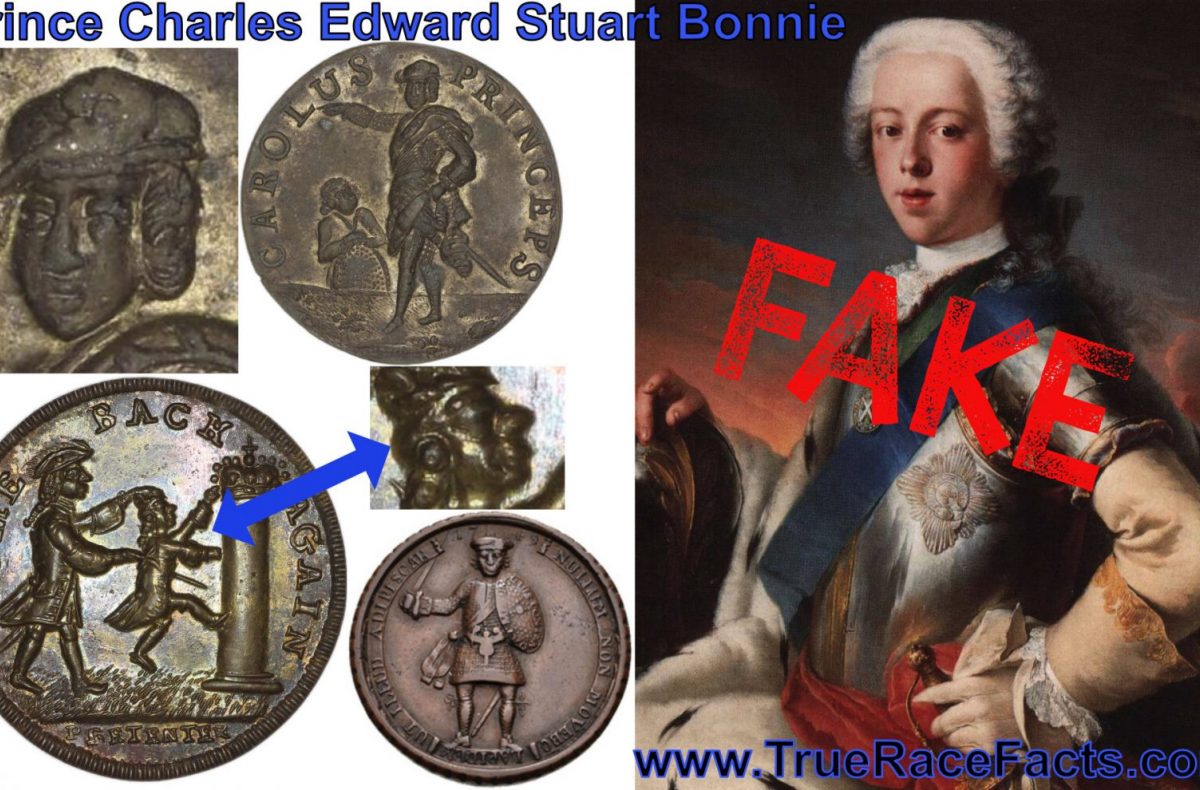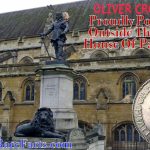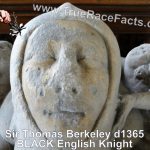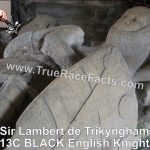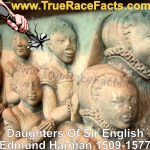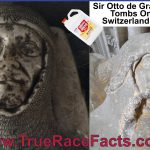1745 Bonnie Prince Charles Edward Stuart The Rightful King That Never Was – The Young Pretender Jacobite Rising
- Guinevere Jackson
- 30 December 2022
- 0 Comment
Charles Edward Louis John Sylvester Maria Casimir Stuart (20 December 1720 – 30 January 1788) was the elder son of James Francis Edward Stuart, grandson of James II and VII, and the Stuart claimant to the thrones of England, Scotland and Ireland from 1766 as Charles III. During his lifetime, he was also known as “the Young Pretender” and “the Young Chevalier“; in popular memory, he is known as Bonnie Prince Charlie.
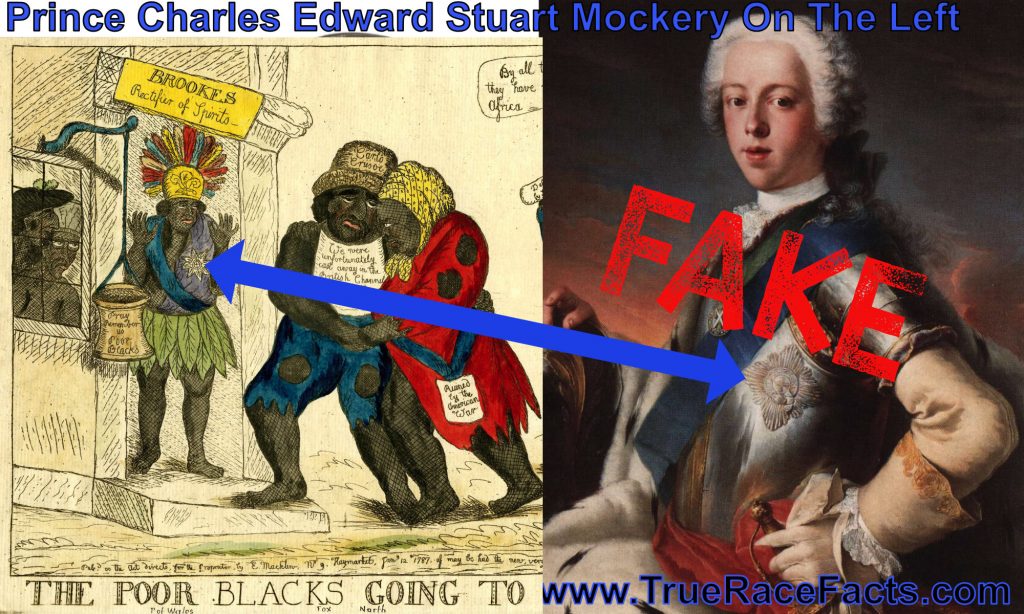
The Prince of Wales and his adherents are travestied as black men; the Prince stands in a doorway inscribed ‘Brookes Rectifier of Spirits’, which is represented as a debtor’s prison: the heads of George Hanger and Burke are seen through a barred window on the left outside which hangs a basket inscribed ‘Pray Remember us Poor Blacks’. Both are naked, except for Hanger’s accustomed cocked hat
Born in Rome to the exiled Stuart court, he spent much of his early and later life in Italy. In 1744, he travelled to France to take part in a planned invasion to restore the Stuart monarchy under his father. When the French fleet was partly wrecked by storms, Charles resolved to proceed to Scotland following discussion with leading Jacobites. This resulted in Charles landing by ship on the west coast of Scotland, leading to the Jacobite rising of 1745. The Jacobite forces under Charles initially achieved several victories in the field, including the Battle of Prestonpans in September 1745 and the Battle of Falkirk Muir in January 1746. However, by April 1746, Charles was defeated at Culloden, which effectively ended the Stuart cause. While there were subsequent attempts such as a planned French invasion in 1759, Charles was unable to restore the Stuart monarchy.
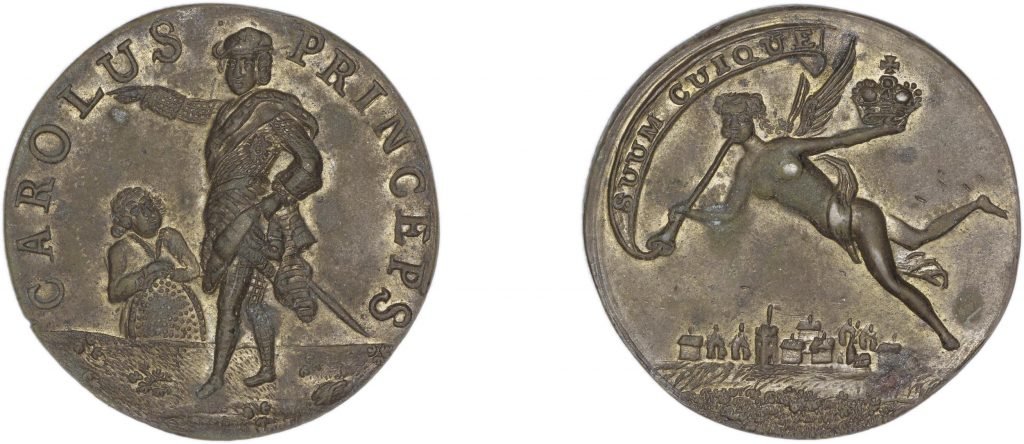
Original coin of Prince Charles Edward Stuart The Young Pretender Jacobite Rising
With the Jacobite cause lost, Charles spent the remainder of his life on the continent, except for one secret visit to London. On his return, Charles lived briefly in France before he was exiled in 1748 under the terms of the Treaty of Aix-la-Chapelle. Charles eventually returned to Italy, where he spent much of his later life living in Florence and Rome. He had a number of mistresses before marrying Princess Louise of Stolberg-Gedern in 1772. In his later life, Charles’s health declined greatly and he was said to be an alcoholic. However, his escapades during the 1745 and 1746 uprising, as well as his escape from Scotland, led to his portrayal as a romantic figure of heroic failure. His life and the once possible prospects of a restored Stuart monarchy have left an enduring historical legend that continues to have a legacy today [1]
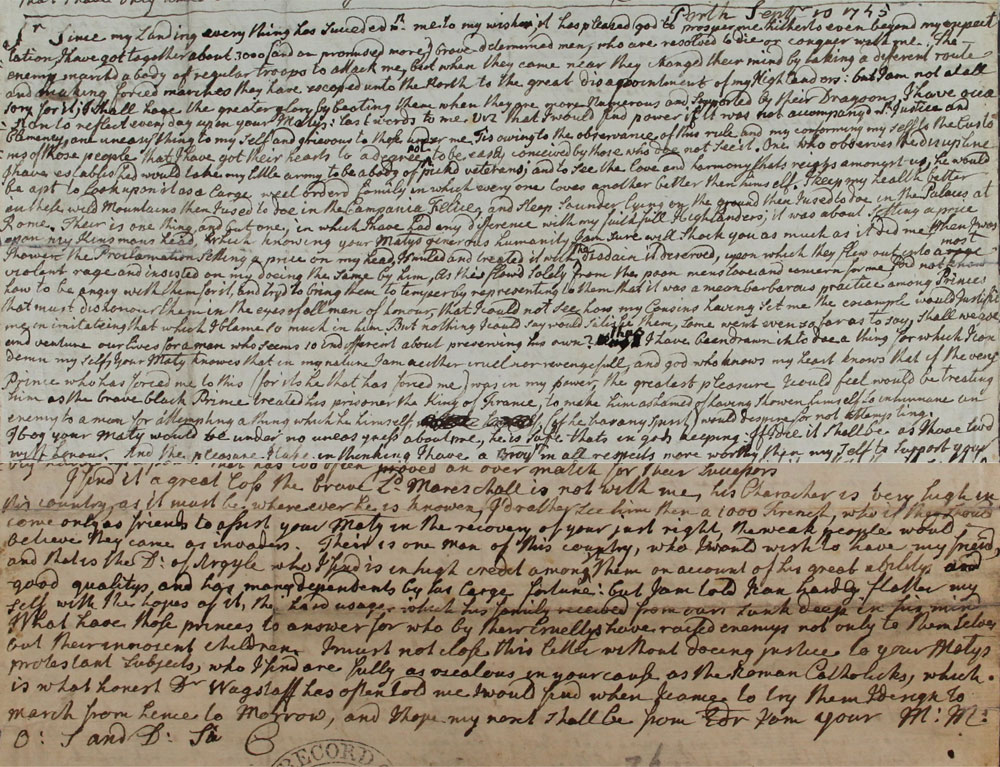
An extract from a letter from Charles Edward Stuart to his father James Stuart dated 20 September 1745 at Perth (SP 54/26/32). Source: https://www.nationalarchives.gov.uk/wp-content/uploads/2014/04/jacobites-sp-54-26-32.jpg
Transcript
Sir, since my landing everything has succeeded to meet my wishes, it has pleased God to prosper me hitherto even beyond my expectation, I have got together about 3000 (and am promised more), brave and determined men who are resolved to die or conquer with me. The enemy marched a body of regular troops to attack me but when they came near they changed their mind by taking a different route and making forced marches they have escaped into the north to the great disappointment of my highlanders: but I am not at all sorry for it, I shall have the greater glory by beating them when they are more numerous and supported by their dragoons. I have occasion to reflect every day upon your majesty’s last words to me, viz [namely] that I would find power if it was not accompanied with justice and clemency, one uneasy thing to myself and grievous to those under me. ‘Tis [It is] owing to the observance of this rule and my conforming myself to the customs of those people that I have got their hearts to a degree not to be easily conceived by those who do not see it. One who observes the discipline I have established would take my little army to be a body of picked veterans; and to see the love and harmony that reigns amongst us, he would be apt to look upon it as a large well-ordered family in which everyone loves another better than himself. I keep my health better in these wild mountains than I used to do, in the campanie felice [happy company], and sleep sounder lying on the ground than I used to do in the palaces at Rome. There is one thing and but one, in which I have had any difference with my faithful highlanders, it was about setting a price upon my kinsman’s head, which knowing your majesty’s generous humanity I am sure will shock you are much as it did me, when I was shown the proclamation setting a price on my head. I smiled and treated it with the distain it deserved, upon which they flew out into a most violent rage and insisted on my doing the same by him as this flowed solely from the poor men’s love and concern for me I did not know how to be angry with them for it, but tried to bring them to temper by representing to them that it was a mean and barbarous practice among princes that must dishonour them in the eyes of all men of honour, that I could not see how my cousin having set me the example would justify me in imitating that which I blame so much in him. But nothing I could say would satisfy them, some went even so far as to say, shall we go and venture our lives for a man who seems so indifferent about preserving his own? Thus I have been drawn in to do a thing for which I can damn myself. Your majesty knows that in my nature I am neither cruel or revengeful and God who knows my heart knows that if the very prince who has forced me to this (for it is he that has forced me) was in my power, the greatest pleasure I could feel would be treating him as the brave, black Prince treated his prisoner, the king of France, to make him ashamed of having shown himself so inhumane an enemy to a man for attempting a thing which he himself if he has any [sincerity] would despise for not attempting. I beg your majesty would be under no uneasiness about me, he is safe that’s in God’s keeping: if I die it shall be as I have lived, with honour.
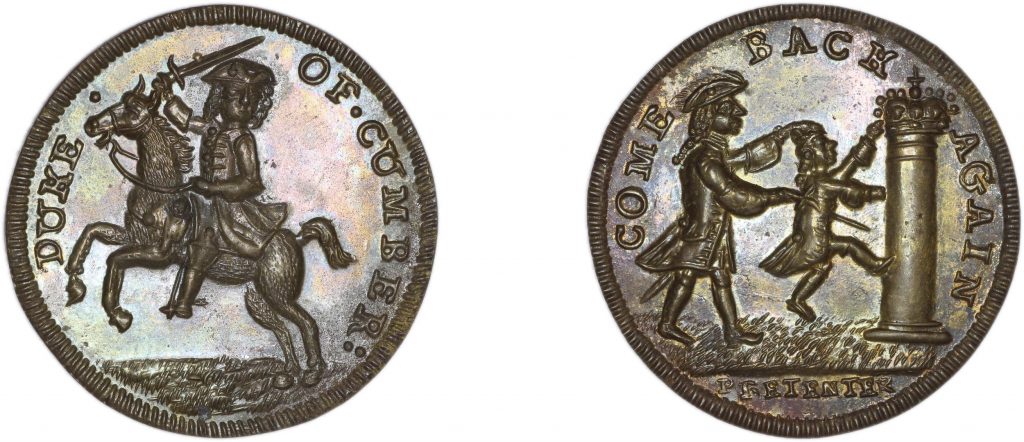
Bronze medal. British Museum No. 8543 ZOOM in and you will notice that the Prince Charles Stuart phenotype is that of a melanated man aka the so-called BLACK man. William, Duke of Cumberland on horseback, galloping, left; sword drawn. (obverse) Prince Charles (the Young Pretender), attempting to snatch the crown from the top of a column, is seized and pulled back by the Duke of Cumberland, who runs his sword through his body
“The vast historical lies mean I can NEVER trust my government leaders, and neither should YOU”
Guinevere Hamilton Jackson
Article Citation: [1] Charles Edward Stuart. (2022, December 29). In Wikipedia. https://en.wikipedia.org/wiki/Charles_Edward_Stuart Image Mockery: Recto – Satire, no.15 in series: depiction of black figures dressed in pastiche historical costume, as if at court, with suitor prince kissing hand of lady Cinderella. Hand-coloured etching and aquatint © The Trustees of the British Museum – Commons Attribution-NonCommercial-ShareAlike 4.0 International (CC BY-NC-SA 4.0)
Disclaimer: True Race Facts have made the long overdue honest determination that the King was dark brown, aka BLACK of the Hebrew, Shemitic negro race. Based on his facial phenotype, lips and thick braided hairstyle. Authentic original coins are the most accurate determination to identify the King because he would have approved the coins before they were hammered and issued. There are many ancient FAKE coins on the market, so beware when looking at coins. The deceivers made it their mission to cover up the dark ages, so even history should now be considered pseudo-history.


